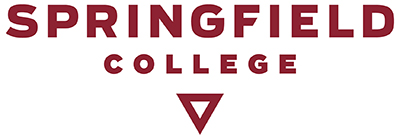Intro to Arts in the Community Class Builds Community-Based Art Habitat

Springfield College Intro to Arts in the Community students help start the frame of the artist habitat at the Center for Leadership and Civic Engagement.
Springfield College Instructor of Art and Community Engagement Jessica Poser, EdD, is leading her Intro to Arts in the Community class in building a community-based artist habitat in collaboration with the Center for Leadership and Civic Engagement at 235 Eastern Avenue in Springfield. This habitat, titled INTER//ACTION//SPRING//FIELD, serves as a site for creative engagement between the College and the surrounding community. The project has been developed as part of the community arts minor within the Department of Visual and Performing Arts.
Habitat for Artists is a collective project that uses the idea of the artist’s studio as a catalyst for mutual engagement between artists and communities. The habitats are temporary 6x6’ studios made from recycled and reclaimed materials which are reused in each new iteration of the project. The habitats encourage participants to consider their relationship to the surrounding environments and communities.
The habitat being constructed at the Springfield College Center for Leadership and Civic Engagement is being designed for community-specific programming with the goal of engaging nearby community members. Habitat programming at this site will include children’s art workshops, installation of a free library, a community information board, concerts, readings, crafting sessions, recipe swaps, access to CSA produce, and a repair shop. Programming will be determined in consultation with community members and will unfold organically as the relationship grows.
Community-based habitats model interdisciplinary collaboration. Artists partner with various community professionals to develop project ideas. A goal for the habitat programming is to connect tools, skills and content in meaningful ways, while making links to various resources throughout the community.
Past habitat projects have connected community resources including schools, community centers, public libraries, local farms, the local historical society and youth health organizations in order to actively engage in issues of the urban environment, sustainability, and local history. Participants are introduced to simple building techniques using recycled materials and are introduced to concepts of modular building, and together consider local and communal issues of sustainability and possibility.
Habitat for Artists encourages artists to think about how individuals might be more creative about their consumption of materials and use of energy and land. Habitat for Artists presents a new model for creative community building. The project aims to create new spaces for creative investigation and to seed and grow new ways of thinking about art, work, and place.
Habitat for Artists has partnered with more than 20 different community organizations, including schools, and involved more than 50 artists. Since the first collection of studios on a small patch of grass in a parking lot, Habitat for Artists studios have been installed in many places including an art park, an environmental education park, a farm, festivals in New York City, as well as outside the Corcoran Gallery in Washington, D.C.

